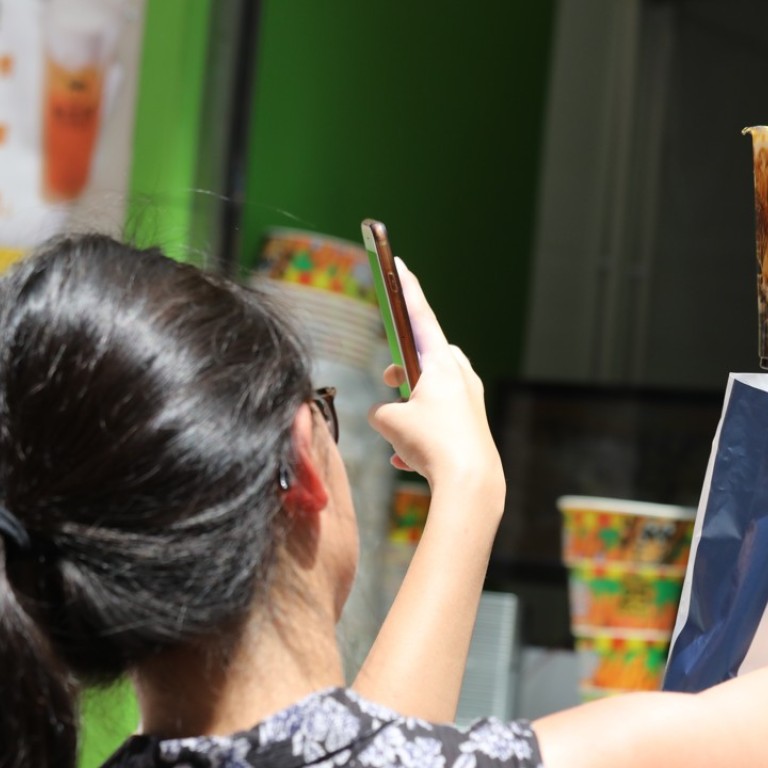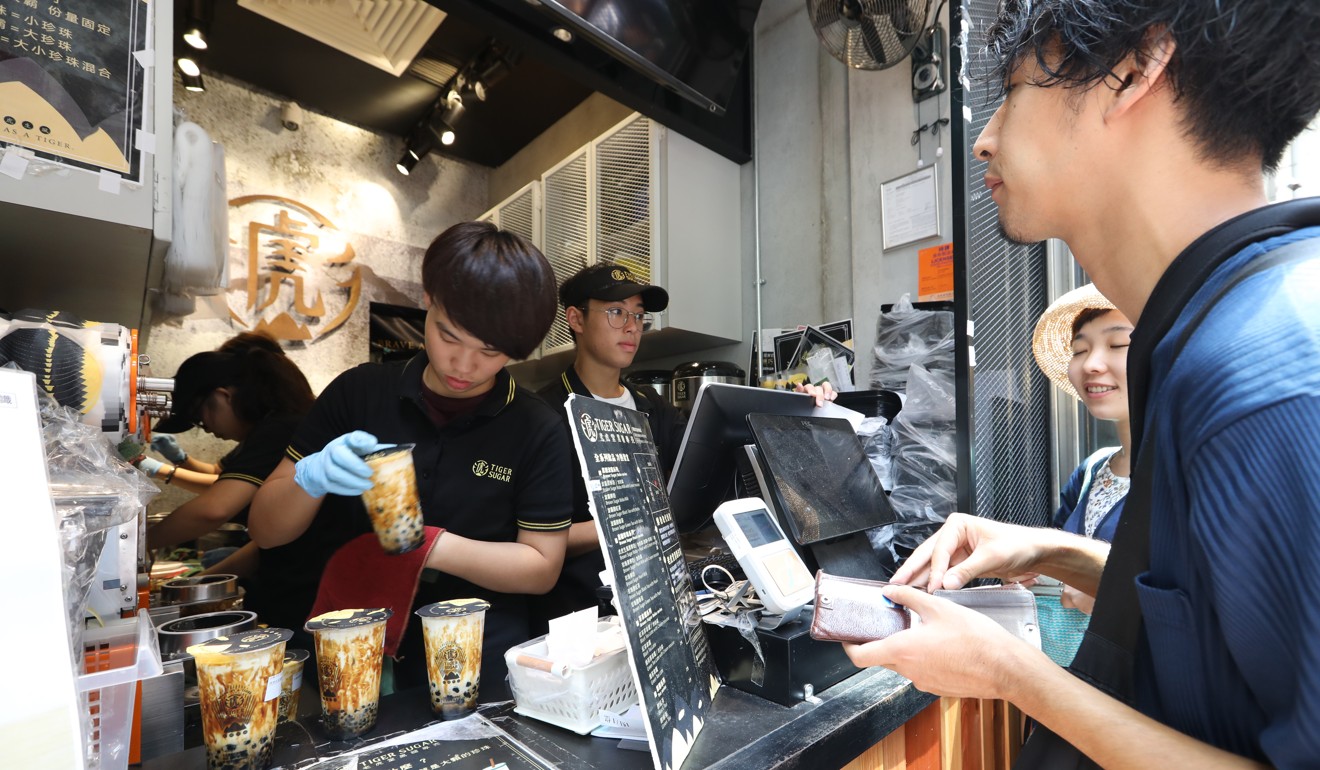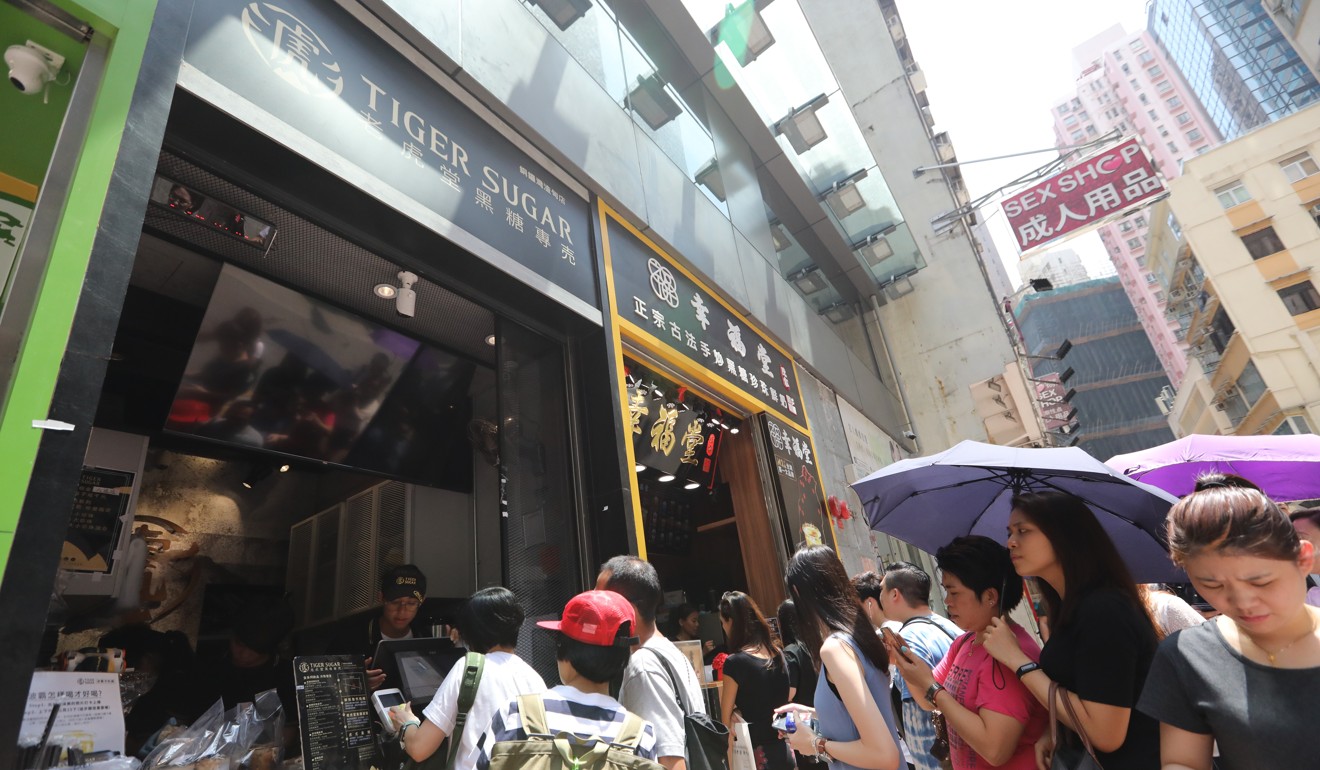
Bubble tea craze is a super sweet market for inventive Hong Kong entrepreneurs. But could this bubble burst?
Bubble tea is being reinvented for a new generation of fans, with colours added to the chewy pearls and new toppings like cheese. But can the stampede of new players actually make it in a crowded market in a city known for its astronomical rents?
Something new is brewing in Hong Kong’s bubble tea market – a fierce battle for market share set off by the drink’s wild popularity.
The tea and milk concoction known for its seabed of chewy tapioca pearls has been around Hong Kong for more than a decade. But it’s being colourfully reinvented for a new generation of fad-hungry, selfie-snapping customers.
The once bland pearls can now bounce about a cup in a rainbow of hues. Eye-catching patterns of ingredients include tiger stripes made of brown sugar. The ever-growing choices of unconventional toppings include creamy cheese. And chic indoor cafes are taking on grab-and-go street shops.
The drink’s fresh look explains the legion of new fans queued up along Hong Kong’s often brutally steamy sidewalks.
It also hints at the wave of new bubble tea shops preparing to open here, some branches of established local businesses hungry to expand, and others from operators in Taiwan, Beijing and other cities where bubble tea is also in vogue.
“One of the reasons I come is because I can take a picture and post it on social media, to show people that I am drinking this,” said Jan Cheung, a 26-year-old office worker standing in a long queue at the trendy Tiger Sugar shop near Causeway Bay’s upscale Times Square shopping complex.
But how many bubble tea businesses can survive in a city with some of the world’s most heart-stopping rents? Especially when even already popular players may have to sell hundreds of cups of bubble tea a day simply to break even?
Such questions are bubbling up.
“Curiosity is embedded in Hong Kong culture. It is not too difficult for any bubble tea store to sell 1,000 cups in the first couple of weeks, but the difficult thing is to keep that figure up in the coming months or years,” said James Chen, the sole agent of Tiger Sugar Hong Kong. “We have our own secret weapon to stand out.”
The secret weapon of the Taiwan-based drink maker, he said, is the “just right” level of sweetness of such treats as brown sugar pearl milk with cream mousse, which sells for HK$30 (US$3.80).

Tiger Sugar has a grab-and-go shop nestled between two others near Times Square. One block away are another four bubble tea shops.
Angela Chow is an entrepreneur who jumped into the bubble tea craze with a 250-square-foot store in Causeway Bay after a trip to Taiwan, where she came across OneZo Tapioca and later became their agent in Hong Kong. She duplicated the live pearl-making show that is hugely popular in Taiwan.
“Instead of traditional black pearls, we also have them in different colours. We let our customers see how those pearls are freshly made,” said Chow, whose “factory,” as it is locally dubbed, draws crowds of young people who take photos and videos of its handmade pearls in red, white, brown and black through the big glass window outside.
Meanwhile, a batch of newcomers has rushed into the city’s bubble tea market. They include Xingfutang and Jenjutan, popular in Taiwan because of recipes that require hours of boiling of their brown sugar tapioca pearls. They both opened their first stores last month.
Heytea, a hugely popular bubble tea business in mainland China whose customers boast on social media of waiting in queues for as long as five hours for cheese-topped beverages, is also coming to Hong Kong.
“Hong Kongers are born to like milk tea,” said Li Zhenglei, development director of Heytea.
Li confirmed that Heytea will open its first Hong Kong store in Sha Tin as soon as the end of this year. “We are quite confident that our tea products will be warmly received by our customers in Hong Kong.”
Bubble tea is sold in a diverse mix of shops in the city – from street shops with no indoor seating to actual restaurants. Heytea is taking the splashy route, with a 1,000 square foot store that signals its confidence that the Hong Kong market is open to new competitors.
Current operators are rushing to scale up.

YiFang, known for its fresh fruit tea, arrived in Hong Kong last December. It owns 13 shops and aims to at least double that figure by the end of this year.
Mainland China operator Heeretea, which expanded to more than 10 shops in Hong Kong in one year, wants to have 20 branches by the end of 2018. In July, it launched a 900-square-foot flagship store in Causeway Bay.
“Facing soaring rent, it is definitely a big risk for us,” said Leslie Tang, Group CEO of Heeretea. “Unlike current common grab-and-go street shops, we would like to foster a new cozy environment and a chill atmosphere when drinking tea.”
Unlike their small street shops, the one-month-old Nordic style, all-white walk-in store boasts its fruit and tea displays in glass cases and has space for sitting. The CEO calls it an experiment, which now only breaks even by selling around 700 cups a day.
Tiger Sugar plans to have four more shops in the coming three months while their next target is to open another five to 10 shops in the coming year, including one in Tsuen Wan set to open by the end of this month.
The wave of new competitors – coupled with high rents – concerns established players.
“It isn’t as profitable as everyone thinks. At first we tried to keep the rent at below 20 per cent of our business, but the new bubble tea franchises coming in this year have driven up the rental price,” said Peggy Fung, promotion manager of A Nice Gift, a local bubble tea operator that started operation in 2013. “We have seen a massive influx in new brands, which has disrupted the price of the product and rent.”
Eva Wu, the vice-president of Lian Fa International, which runs the Sharetea franchise, one of the first Taiwan bubble tea brands to enter the Hong Kong market in 2009, shares that worry. But she also thinks there could be something positive that comes out of the rush of competition.
“The positive side is that new brands will bring new elements, which will fuel up the whole industry and create an even larger market where all of the operators can benefit,” Wu said.


